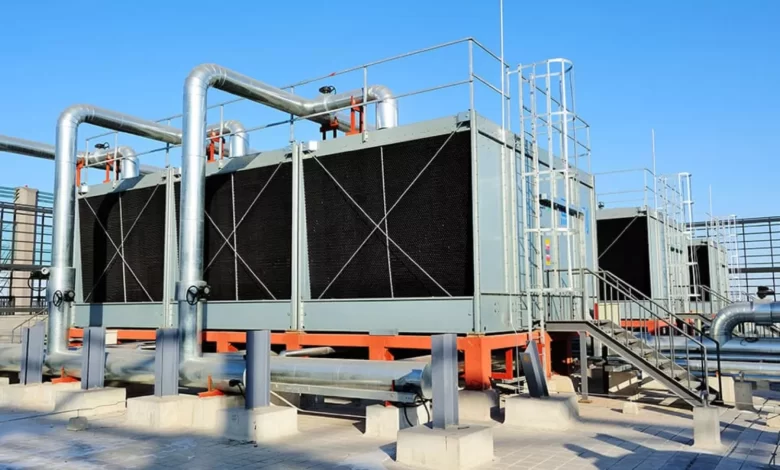Understanding the Role of Cooling Towers

Cooling towers are vital components in various industrial processes and air conditioning systems, playing a crucial role in maintaining optimal operating conditions and preventing overheating.
They facilitate the dissipation of excess heat generated during industrial processes or the cooling of water used in HVAC (heating, ventilation, and air conditioning) systems. This article delves into the functions, types, and importance of cooling towers.
The Function of Cooling Towers
The primary function of a cooling tower is to dissipate heat from processes or equipment, thereby preventing overheating and ensuring efficient operation. The cooling process involves the exchange of heat between hot water and the surrounding air, resulting in the reduction of water temperature.
Cooling towers achieve this by utilizing the principles of evaporation and convection. Hot water is circulated through the tower, where it is exposed to ambient air. A fraction of the water evaporates, carrying away a significant amount of heat.
The remaining water, now cooled, is recirculated back into the industrial process or HVAC system. This cyclic process helps maintain stable operating temperatures and prevents equipment damage due to excessive heat buildup.
Types of Cooling Towers
Cooling towers come in various types, each designed to suit specific requirements and conditions. The two main categories are:
- Open-Circuit Cooling Towers: These towers allow direct contact between the recirculating water and the ambient air. Water is sprayed or distributed over a fill material, creating a large surface area for maximum evaporation and heat transfer. Open-circuit cooling towers are commonly used in power plants, petrochemical facilities, and industrial processes.
- Closed-Circuit Cooling Towers: In closed-circuit towers, the recirculating water does not come into direct contact with the ambient air. Instead, it is circulated through a separate heat exchanger, where heat is transferred to another fluid that is then exposed to the ambient air. Closed-circuit cooling towers are suitable for applications where water quality preservation is crucial, such as HVAC systems in commercial buildings.
Cooling towers can also be classified based on their airflow patterns, such as counterflow and crossflow designs, each offering distinct advantages in terms of efficiency and space utilization.
Importance of Cooling Towers
Cooling towers play a critical role in various industries and applications, contributing to overall system efficiency and sustainability:
- Industrial Processes: In industries like power generation, manufacturing, and chemical processing, cooling towers prevent equipment overheating, ensuring consistent and efficient operation. By maintaining optimal temperatures, cooling towers extend the lifespan of machinery and reduce the risk of costly downtime.
- Energy Efficiency: Cooling towers enhance energy efficiency by facilitating heat exchange and reducing the load on HVAC systems. By harnessing the natural cooling properties of evaporation and convection, these towers help lower energy consumption and operational costs.
- Water Conservation: In open-circuit cooling towers, a portion of water is lost through evaporation. However, many modern cooling towers incorporate water treatment systems to minimize this loss and enable water reuse. This contributes to water conservation efforts and sustainable water management.
- Environmental Impact: Properly functioning cooling towers mitigate environmental impacts by preventing the release of excessive heat into the atmosphere. This helps maintain the ecological balance of surrounding ecosystems and reduces the potential for thermal pollution in water bodies.
- Building Comfort: In commercial and residential settings, cooling towers are integral to HVAC systems that regulate indoor temperatures and ensure occupant comfort. Closed-circuit cooling towers are particularly suitable for maintaining water quality in these applications.
Cooling towers play a pivotal role in diverse industries and applications by effectively managing heat and maintaining optimal operating conditions. Their ability to dissipate excess heat through evaporation and convection contributes to energy efficiency, water conservation, and environmental sustainability. With various types and designs available, cooling towers continue to be indispensable components in the modern industrial and HVAC landscape.